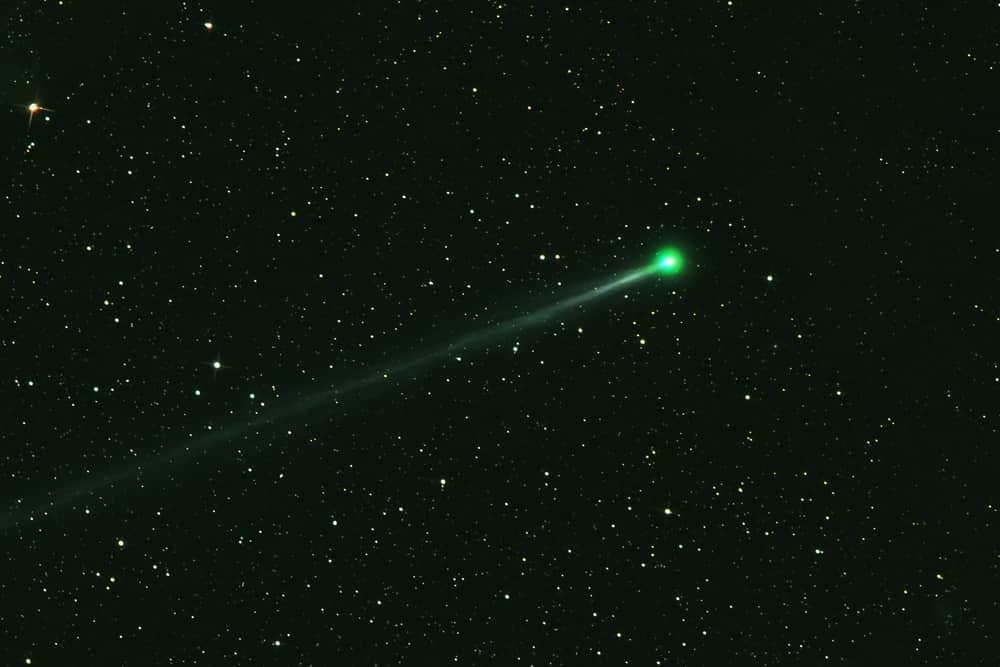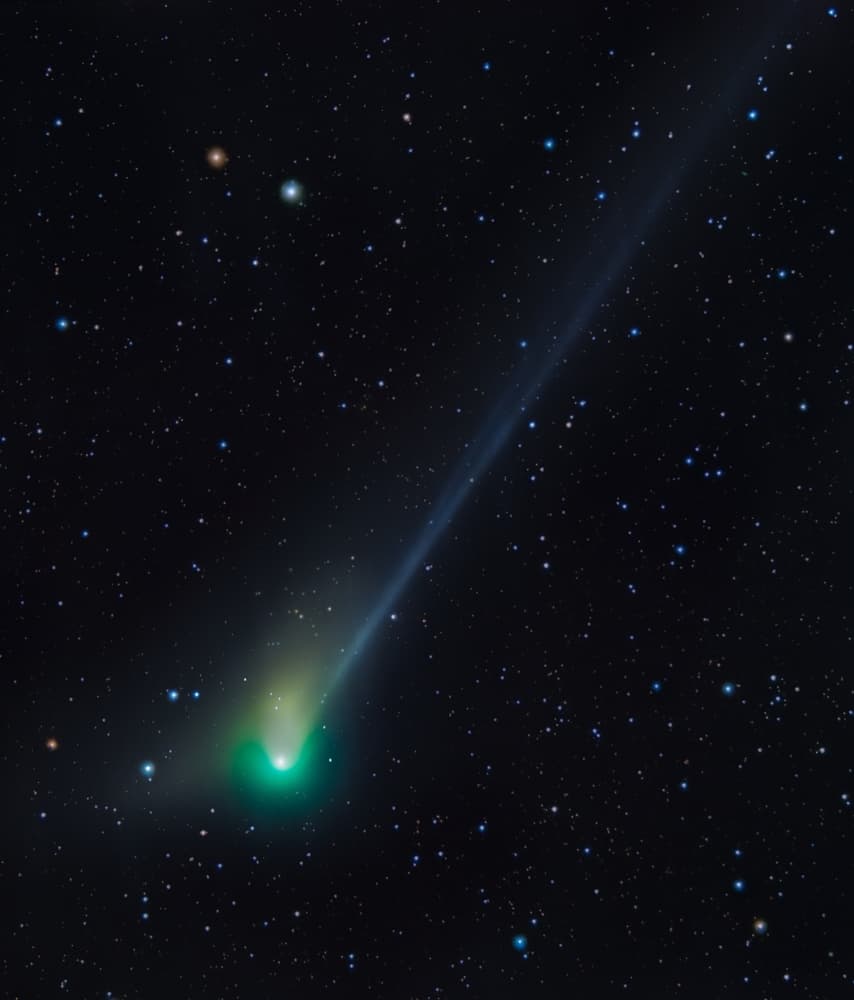If you were following the news back in early February, you probably remember the mysterious bright green comet seen in the skies between the Big Dipper and Little Dipper. This comet set the minds of many alight as they wondered if they were seeing a scientific discovery in the making.
It seems like every time a scientific abnormality presents itself to the public eye, people will postulate all kinds of theories about what such an event could signify. In the instance of this bright green comet, people have been wondering whether this event will be as significant as Halley’s comet or as meaningful in history and the passing of time.
The significance of this particular comet is that it’s unlikely it’s been recorded before by humans. While it might’ve been noted by humans way back in the day, it’s estimated that this particular comet only makes the rotation where it’s visible from Earth every 50,000 years or so.
While green comets are occasionally visible to humans here on Earth, they are still rare. For one to be so prominent in the night sky is highly unusual – even though this particular comet isn’t the biggest or the brightest, it brings to mind many questions about comets that people might have – where do they come from? What’s their significance? Let’s dive into it!
Contents
What Is a Comet?
Comets are objects made out of dust and ice. These objects can originate from many places, including the Kuiper Belt, which is where you can find Pluto, which we used to consider a planet. However, things have changed quite a bit nowadays, and Pluto is no more.
However, one thing that isn’t “no more” is the existence of comets, which are quite important pieces of our solar system. These objects continually orbit around suns and stars in various places around the universe.
They don’t necessarily serve a purpose, but when examining the universe, it’s hard to say if anything does serve a purpose – things just seem to exist for time unending.

Breakdown Of Your Typical Comet
Comets are made up of a variety of distinctive parts. The parts that you most likely have heard of include the nucleus and the tail.
The nucleus is usually a simple ball of dust and ice that, on average, stretches over ten miles across. It is helpful to remember that many objects in space are like the things you see in your car’s side mirrors – they are much larger than they initially appear.
Another part worth mentioning is the coma, a big and opaque gas cloud surrounding the nucleus in a nebulous fashion. Not only does it help to give the nucleus that much more of a distinguishing glow, but it also serves as a way to preserve its integrity.
After all, zooming through space and the fringes of various atmospheres can be exhausting for any celestial object, let alone something made of frozen water and dust. However, with the aid of a coma, any nucleus can more easily resist the effects of being hurtled through space at ridiculous speeds.
Now, what goes into the tail is something a bit different. The tail is typically made of dust mixed with various ions, which are known for giving the comet a distinguished blue glow.
Not only does this allow scientists to differentiate comets from asteroids and meteors easily, but it also makes comets particularly pretty to look at! Having any blue glow emanating from the back of you will make you a visual target that is much more pronounced. The dust tail adds a bit of an aesthetic but makes the overall object more appealing and sought-after.
What’s So Special About The Mission Green Comet?
Now that we know what comets are, you’re probably thinking, “Well, what’s so special about this particular comet?” Well, there are many ways to answer that question. First off, this is a comet that is only visible to the naked eye once every 50,000 years.
This in itself makes it a particularly interesting comet, as many such celestial objects will make themselves visible with a much higher frequency. It puts this comet into slightly more of an elusive category, making it more desirable to amateurs and professionals alike.
The other thing distinguishing this comet is that it is colored green. Green celestial objects are quite rare. While you might be familiar with the aurora borealis, it helps to remember that this is an earthly phenomenon, not one that originates from outer space. When we remove the aurora borealis from the equation, the number of green objects we associate with space drops drastically.
This helps explain the particular allure of this comet – people liked how it was a color that they might not traditionally correlate with the reality of space.
This makes sense, as most celestial objects are of colors that are less than attention-grabbing. Understanding that something as simple as having an unusual color can make a comet particularly alluring can be challenging to grasp. Still, it makes a lot more sense once you allow your mind to go there.
There are many more reasons that explain the significant attention that this comet has been receiving, including its relative distance and the likelihood that it will leave the solar system after it exits. There is much speculation and postulation about what the average astronomical amateur could do when gazing at this particular comet.
Still, we think that what really has people interested is the fact that this specific comet seems to have arrived entirely unannounced, without any additional fanfare.
Sure, it isn’t particularly exciting in terms of what makes a comet a comet, but when it comes to what makes a celestial object interesting to the majority of people, the slightest bit of story can make a vast difference in terms of both general interest and professional intrigue.

Is This Particular Comet Worth My Attention?
While we’ve broken down this particular comet in many ways, we understand that you might be at least slightly confused about this comet and whether it is worth investing in a small to medium-sized telescope to examine the night sky. Unfortunately for you, you will never see this comet again – at least organically.
As we mentioned, this particular little number isn’t going to come back around for at least the next 50,000 years, so unless you get bitten by a vampire, you won’t be able to see it in your lifetime.
That means if you already missed it, then you missed it. There’s no going back and examining various images of the climate on your ideal search engine. The comet is gone from your eye forever, so get used to it.

